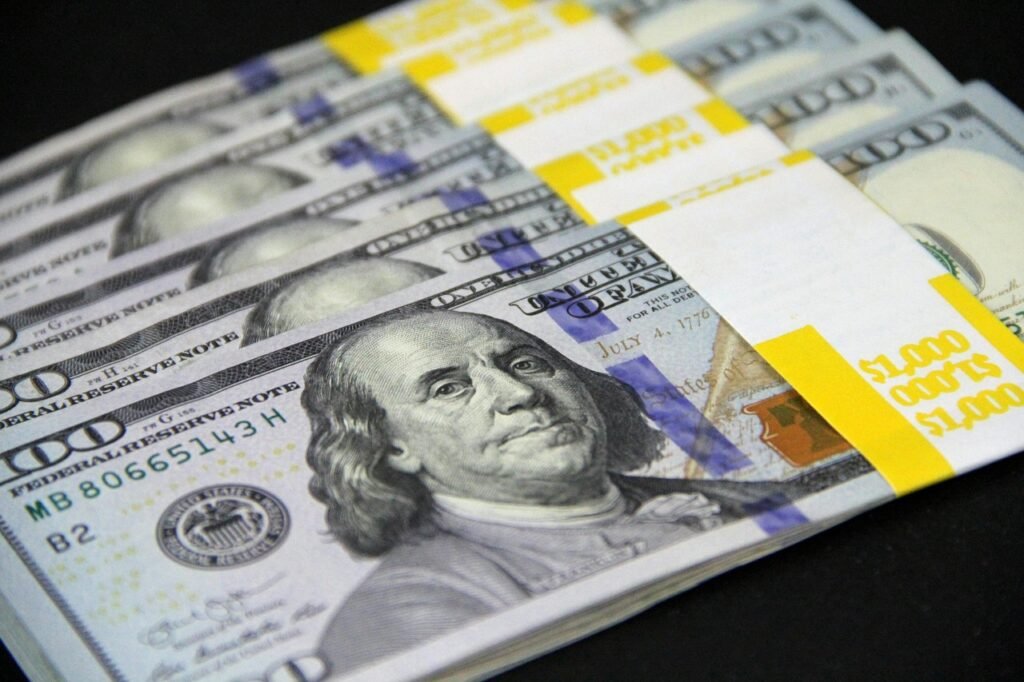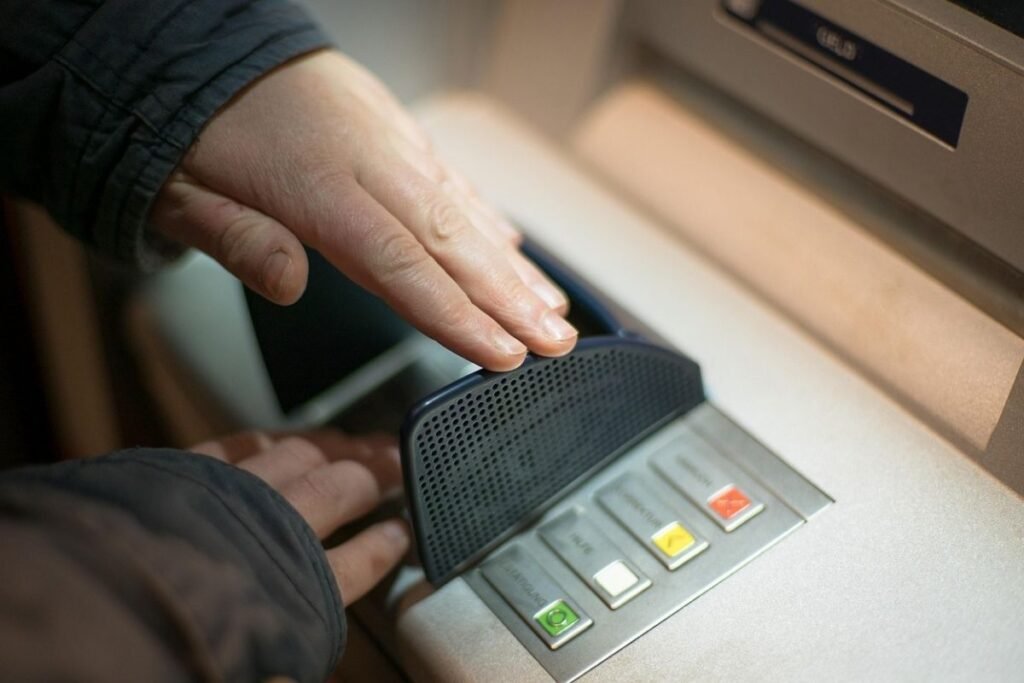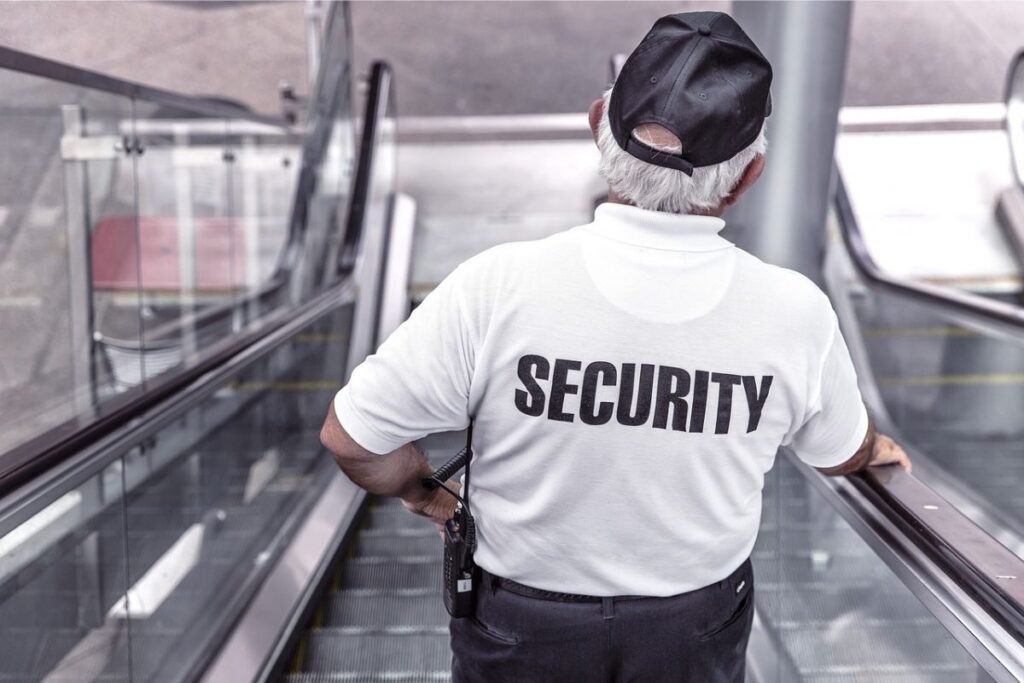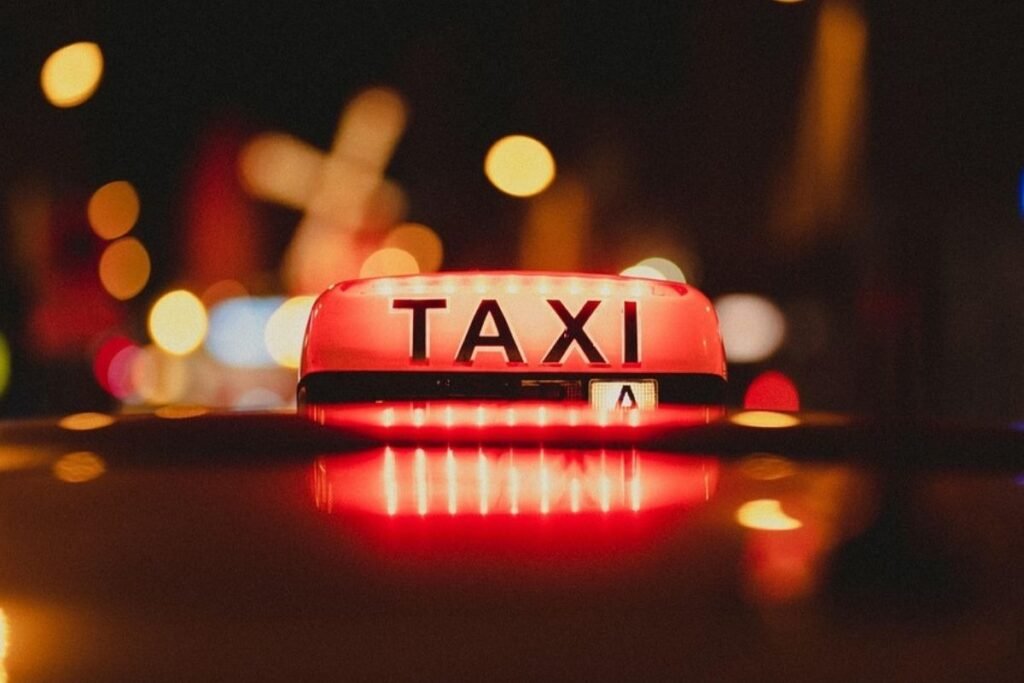
Before every trip, I make it a habit to scan YouTube for common scams in the cities we’re visiting—forewarned is forearmed. It paid off big time when I found myself face-to-face with a pickpocket gang I’d already seen online. I knew their moves before they even tried them. Sure enough, they launched into their scam but were caught in the act, leading to a heated exchange in the middle of the train carriage. They were shoved off at the next stop—only to hop onto the next train like nothing had happened.
This experience reinforced something we always practice carrying our backpacks in front when using public transport, keeping our valuables securely tucked away and making sure no one slips between us in crowds. Scammers are everywhere but being aware of their tricks can make all the difference. This article will arm you with the knowledge to recognize and avoid some of the most common tourist scams worldwide.
Why Are Tourists Frequently Targeted for Scams?
Tourists are prime targets because they’re often navigating unfamiliar surroundings, dealing with language barriers and adjusting to different customs. This natural uncertainty makes them more vulnerable to opportunistic scams.
Another reason is what we carry: most tourists travel with a mix of cash, credit cards, passports and other valuables. To a scammer, that’s a goldmine. Even simple items like cameras, phones or travel bags can become a target in busy places.
Adding to the problem is the short-term nature of travel. Because tourists rarely stay in one place for long, they’re less likely to report scams to local authorities or pursue justice. This lack of follow-up allows scammers to operate with little consequence, repeating their tricks on new arrivals every day.
In short, tourists tick all the boxes: distracted, trusting and well-equipped with valuables—the perfect conditions for a scammer to strike.
Navigating and Evading Common Scams
With global travel more accessible than ever, scammers have sharpened their tactics, exploiting tourists’ unfamiliarity with new places, cultures and systems. These tricksters know exactly how to prey on a traveller’s trust and vulnerabilities, often blending in as helpful locals or offering deals that seem just too good to pass up.
The good news is awareness is your best defence. By recognising the warning signs early, you can sidestep the most common pitfalls and keep your focus where it belongs—on the adventure.
To help you stay one step ahead, here are 20 of the most common travel scams worldwide and practical tips on how to spot them and avoid becoming a victim.
Table of Contents
- Why Are Tourists Frequently Targeted for Scams?
- Navigating and Evading Common Scams
- 1. Counterfeit Money
- 2. Wrong Train Compartment
- 3. ATM Scams
- 4. The Bump and Grab
- 5. The Swarm
- 6. The “You’re Dirty” Scam
- 7. The Ring Scam
- 8. Fake Officials
- 9. The Overfriendly Local
- 10. Bus Scams
- 11. “Recognizing You from the Hotel” Scam
- 12. The “It’s Closed” Scam
- 13. Short-changing Scam
- 14. The Switcheroo Scam
- 15. The Bracelet Scam
- 16. The Begging Baby Scam
- 17. Taxi Scams
- 18. The Overcharge Scam
- 19. Prepaid Taxi Scam
- 20. The “Too Good to Be True” Scam
- Helpful Resources for Safe and Stress-Free Travels
- Final Thoughts
1. Counterfeit Money

How it Works:
Scammers swap your genuine cash for fake bills, then accuse you of trying to pay with counterfeit money. This often happens with taxi drivers, street vendors or even small shops. They demand a replacement, scamming you out of extra money while keeping your original bill.
How to Avoid It:
- Know the currency: Familiarize yourself with local notes—look for watermarks, holograms and raised printing.
- Check your change before walking away.
- Carry small bills or use exact change to reduce risk.
- Use official sources: Withdraw from reputable ATMs or exchange at licensed currency offices, not street vendors.
2. Wrong Train Compartment
How it Works:
You’re seated on a train when someone posing as an official approaches, claiming you’re in the wrong compartment or class. They demand an on-the-spot “upgrade fee” or threaten you with a fine. In reality, they have no authority—the money goes straight into their pocket.
How to Avoid It:
- Do your homework: Research the train system, ticketing rules and seat assignments before traveling.
- Keep your ticket handy and double-check that you’re in the correct spot.
- If approached, ask for ID and confirm with a legitimate conductor or staff member.
- Never pay cash on the spot—go directly to the official ticket counter if in doubt.
3. ATM Scams

How it Works:
Scammers install skimming devices on ATMs to steal your card details. These devices are often paired with hidden cameras or fake keypads that capture your PIN. In some cases, ATMs are tampered with to trap your card, allowing scammers to retrieve it later once you’ve walked away.
How to Avoid It:
- Choose safe ATMs: Use machines located inside banks or in secure, well-lit areas, not on isolated streets.
- Check for tampering: Inspect the card slot for anything loose or unusual before inserting your card.
- Protect your PIN: Always cover the keypad with your hand while entering it.
- Stay alert: Turn on banking transaction alerts to catch suspicious activity quickly.
- If your card is trapped, call your bank immediately—never accept help from strangers nearby.
4. The Bump and Grab
How it Works:
In crowded spots like metros, markets or busy streets, a thief or a team of pickpockets—will bump into you on purpose, creating a split-second distraction. While you’re off balance or reacting, an accomplice swiftly picks your pocket, unzips your bag or snatches valuables before you even notice.
How to Avoid It:
- Split your valuables: Keep money, cards and passports in different secure places—never all in one pocket or bag.
- Choose secure bags: Use a cross-body bag with a zipper, worn in front of you, not on your back.
- Adjust for crowds: In busy areas, wear your backpack on your chest.
- Know the hotspots: Be extra cautious on public transport, escalators and at ticket counters—prime pickpocket territory.
- If someone bumps into you, instinctively check your belongings before brushing it off.
5. The Swarm

How it Works:
A group of scammers—often including children, suddenly surrounds you in a crowded place. They may act overly friendly, ask for directions or stage a commotion. While you’re distracted, members of the group pickpocket your valuables, then disperse quickly into the crowd.
How to Avoid It:
- Stay alert in markets, train stations and other tourist hotspots.
- Secure your valuables: Use a cross-body bag with a zipper, worn in front. Never keep phones or wallets in back pockets.
- If a group surrounds you suddenly, don’t engage—move away quickly.
- Watch for “helpful” distractions like spilled drinks, flyers or sudden questions while someone else gets close.
- Trust your instincts—if something feels off, create space and protect your belongings.
6. The “You’re Dirty” Scam
How it Works:
A scammer discreetly smears something on your clothes—ketchup, mustard, even fake bird droppings. They then “helpfully” point it out and offer to clean it off. While you’re distracted, an accomplice pickpockets you or they may even grab your bag while your attention is on the stain.
How to Avoid It:
- If someone suddenly points out a stain, keep walking and check it later in a safe spot.
- Politely refuse help and move away quickly.
- Stay extra cautious in tourist hotspots, metros and markets, where this scam is common.
- Secure your valuables in a cross-body bag worn in front of you.
7. The Ring Scam
How it Works:
A scammer “finds” a ring near your feet and insists it belongs to you. If you engage, they claim it’s valuable and offer to sell it at a “great price.” In another twist, they may later accuse you of stealing it and demand payment.
How to Avoid It:
- Don’t engage—if someone insists they’ve found something that’s yours, just walk away.
- Never touch the ring, as scammers may use this as “proof” you accepted it.
- Stay alert in tourist-heavy areas and parks, where this trick is common.
- If someone turns aggressive, remain calm, keep moving and avoid reaching for your wallet.
8. Fake Officials

How it Works:
Scammers pose as police officers, immigration officials or transit inspectors and demand to see your passport or visa. They then claim there’s a problem and request an on-the-spot “fine” or bribe to make it disappear. In some cases, they may even hold your documents hostage until you pay.
How to Avoid It:
- Never hand over your passport or documents unless you’re absolutely sure of their legitimacy.
- Ask for ID—real officials always carry badges and proper identification.
- If in doubt, insist on going to the nearest police station to resolve the matter.
- Be wary of random document checks in non-official areas like tourist sites, parks or near ATMs.
- Keep a digital copy of your passport on your phone and store the original securely (e.g., in a hotel safe) whenever possible.
9. The Overfriendly Local
How it Works:
A seemingly friendly local strikes up a casual conversation, offering to show you around, take you to a “hidden gem,” or just chat. Once they’ve gained your trust, they lead you to a shop, bar or restaurant where you feel pressured into buying something—often at inflated prices. In some cases, they vanish when the bill arrives, leaving you stuck with the expensive tab.
How to Avoid It:
- Enjoy meeting people but stay cautious if someone is overly eager to guide you somewhere.
- Politely decline offers for special tours, shopping trips or drinks with strangers unless you’re confident it’s genuine.
- Check prices before ordering anything to avoid being overcharged.
- Trust your instincts—if it feels off, excuse yourself and walk away.
10. Bus Scams
How it Works:
On crowded buses, a scammer may pose as a helpful local, offering to assist with your luggage—only to tamper with or steal it while you’re distracted. Sometimes they work in pairs: one distracts you with conversation while the other rifles through your bag. Others go further, posing as bus staff, charging fake ticket fees or directing you to a “special” bus that massively overcharges.
How to Avoid It:
- Keep your bags close: Ideally on your lap or between your legs, not out of sight.
- If luggage must be stowed, secure it with a lock in the overhead or under-seat compartment.
- Be cautious of overly helpful strangers—genuine staff won’t pressure you.
- For long-distance travel, always buy tickets from official counters or trusted apps, not from random individuals on the street.
11. “Recognizing You from the Hotel” Scam
How it Works:
A stranger approaches, claiming they work at your hotel and “remember” you from check-in. They may start a friendly conversation before steering you toward a shop, restaurant or event where you’re pressured into spending money at inflated prices. In some cases, they may attempt to lure you into a fake tour or even unsafe situations.
How to Avoid It:
- Be wary of people who seem to know personal details—real hotel staff won’t randomly approach guests outside.
- If someone claims to recognize you but you don’t remember them, politely decline and walk away.
- Never share personal details like where you’re staying unless absolutely necessary.
- When in doubt, return to your hotel and confirm with reception whether the person is genuine.
12. The “It’s Closed” Scam

How it Works:
This happened to us and we recognised how it worked. A local approaches you near a tourist attraction, claiming it’s closed for a holiday, prayer time or maintenance. They then offer to take you somewhere “better”—often involving a tuk-tuk driver, tour guide, or shop where they earn a commission. In reality, the attraction is usually open, and you’re steered to an overpriced or pressured shopping stop. This scam is especially common in Bangkok, often around the Grand Palace.
How to Avoid It:
- Verify yourself: Walk to the entrance and check posted signs or official websites.
- Ignore unsolicited advice from random locals, tuk-tuk drivers, or “helpful” strangers.
- Politely decline and continue to your intended destination.
- If unsure, check with your hotel staff or use Google Maps for accurate opening hours.
13. Short-changing Scam
How it Works:
A vendor, taxi driver or cashier deliberately gives you less change than you’re owed, counting on you being unfamiliar with the local currency. Sometimes it’s subtle—handing over similar-looking bills—while other times they’ll count quickly and skip notes. In another variation, they may pretend you paid with a smaller bill than you actually did.
How to Avoid It:
- Always count your change before leaving the counter or walking away.
- Learn local denominations to avoid confusion with similar-looking notes.
- Use small bills or exact change whenever possible.
- If shortchanged, point it out calmly—sometimes it’s a mistake but scammers rely on tourists not double-checking.
14. The Switcheroo Scam
How it Works:
After you buy an item—whether it’s a bag, electronic device or souvenir—the seller subtly swaps it for a lower-quality or counterfeit version before handing it to you. This trick is especially common in markets and street stalls, where the fast pace and distractions make it easy for scammers to pull off the switch unnoticed.
How to Avoid It:
- Keep your eyes on the item until it’s safely in your hands.
- Double-check the product before leaving, especially if it’s packed into a bag or box.
- Don’t let sellers repackage the item once you’ve inspected it.
- For expensive purchases, stick to reputable shops rather than street vendors, where this scam is more likely.
15. The Bracelet Scam

How it Works:
A street vendor or stranger quickly ties a bracelet, string or wristband around your wrist—often while chatting or complimenting you. Once it’s on, they demand payment, claiming it was a gift or that you agreed to buy it. Some even turn aggressive if you refuse. This scam is especially common in Europe—notably Paris and Rome but appears in many tourist hotspots worldwide.
How to Avoid It:
- Firmly decline anyone trying to put something on you—pull your hand away immediately.
- Avoid conversation—these scammers rely on distracting chatter to act quickly.
- If they manage to tie something on you, remove it calmly and place it on the ground—you are not obligated to pay.
- Walk with confidence and purpose, as scammers often target hesitant or distracted tourists.
16. The Begging Baby Scam
How it Works:
A woman or sometimes even a child—holds a baby (real or fake) while begging for money, claiming they are hungry, homeless or in distress. The sight of a baby plays on emotions, making tourists more likely to give. In some cases, the baby is borrowed or rented and the money goes straight to an organized ring rather than the person in need.
How to Avoid It:
- If you want to help, donate to reputable charities instead of giving directly on the street.
- Be aware that organized begging groups exist, where individuals are forced to beg and surrender earnings to a handler.
- If approached, politely decline and keep walking. Sadly, giving money often fuels the scam rather than helping.
17. Taxi Scams
How it Works:
Unscrupulous taxi drivers inflate fares, take unnecessarily long routes or claim the meter is broken. Some even swap your bills, pretending you handed them a smaller note than you did. In busy tourist hotspots, drivers may refuse to use the meter altogether and demand an outrageous flat rate.
How to Avoid It:
- Research standard fares in advance—apps like Google Maps help estimate distances.
- Use official taxi stands or ride-hailing apps like Grab, Uber or Bolt where available.
- If using a metered taxi, confirm the meter is on before the ride begins.
- If the driver refuses or quotes a high fare, politely decline and find another taxi.
- Pay with small bills to avoid drivers swapping your money for a smaller denomination.
18. The Overcharge Scam
How it Works:
You agree on a price for a service—a taxi ride, guided tour or even a massage—only to be charged much more at the end. The scammer claims there were “extra fees,” added time or that you misunderstood the price. In some cases, they become aggressive to pressure payment.
We personally experienced this in Egypt—we negotiated a taxi fare, only to be told at the end that the price was per person, not total. The driver turned loud and verbal and out of fear, we paid the inflated amount.
How to Avoid It:
- Confirm the total cost upfront, not just per person.
- Before starting, ask about any extra fees for time, distance or add-ons.
- Avoid vague terms like “Pay what you think is fair”—these are designed to trap you.
- If someone tries to change the price afterward, stand firm on the original agreement and refuse to pay extra.
19. Prepaid Taxi Scam

How it Works:
At airports or major transport hubs, some drivers claim the official prepaid taxi booths are closed, so they can charge you an inflated fare. Others pose as representatives of an official taxi company, leading you to an unregistered vehicle where you’ll be overcharged or possibly put in an unsafe situation.
How to Avoid It:
- Verify yourself whether prepaid counters are open—never rely on a driver’s word.
- Use airport-sanctioned taxis or ride-hailing apps like Uber, Grab or Bolt where available.
- If a driver approaches you inside the airport, they’re almost always unofficial—ignore them and head to the designated taxi queue.
- Research typical fares beforehand so you know what’s reasonable.
20. The “Too Good to Be True” Scam
How it Works:
If a deal, price or offer sounds too good to be true, it usually is. Scammers lure tourists with heavily discounted tours, free gifts or unbelievable exchange rates, only to sting them later with hidden fees, fake products or even unsafe situations.
How to Avoid It:
- Trust your instincts—if something feels off, it probably is.
- Research average prices for tours, souvenirs and services before buying.
- Be wary of street vendors or unofficial guides offering dramatic discounts.
- Remember: legitimate deals don’t rely on urgency or pressure to act immediately.
Helpful Resources for Safe and Stress-Free Travels
Traveling should be about adventure and discovery—not stress and scams. Awareness is your first line of defence but having the right tools and support can give you extra peace of mind. These resources can help you stay safer and more confident on the road.
Travel Insurance
- Things don’t always go to plan—lost luggage, delayed flights or medical emergencies can happen anywhere. A solid travel insurance plan means you won’t be left footing the bill.
Travel Safety Gear
- Pickpockets thrive on easy targets. Gear like money belts, anti-theft backpacks and RFID-blocking wallets can make a big difference. Brands like Pacsafe and outdoor retailers such as REI or Backcountry carry reliable, travel-tested options.
VPN Services – Surfshark
- Public Wi-Fi is a scammer’s playground. Using a VPN (Virtual Private Network) protects your personal data in airports, hotels and cafés. Our personal favourite is Surfshark, it’s affordable and easy to use and add an important layer of security.
Language Learning Apps
- Learning just a few local phrases can go a long way in avoiding miscommunication—and even potential scams. Plenty of apps make it quick, fun, and effective to pick up the basics for your journey.
Personal Safety Apps
- If you’re traveling solo or just want extra backup, safety apps can provide reassurance. Many allow you to share your location, send SOS alerts or receive real-time advisories—handy tools for staying connected and secure.
Final Thoughts
Traveling is one of life’s most rewarding experiences, opening doors to new cultures, breathtaking sights and unforgettable moments. Yes, scams exist—but they don’t have to define your journey. With a little awareness and preparation, you can stay one step ahead and keep the focus on what really matters: enjoying the adventure.
So go ahead—pack your bags, trust the journey, and explore the world with confidence.
“Awareness is the best travel companion you’ll ever have“